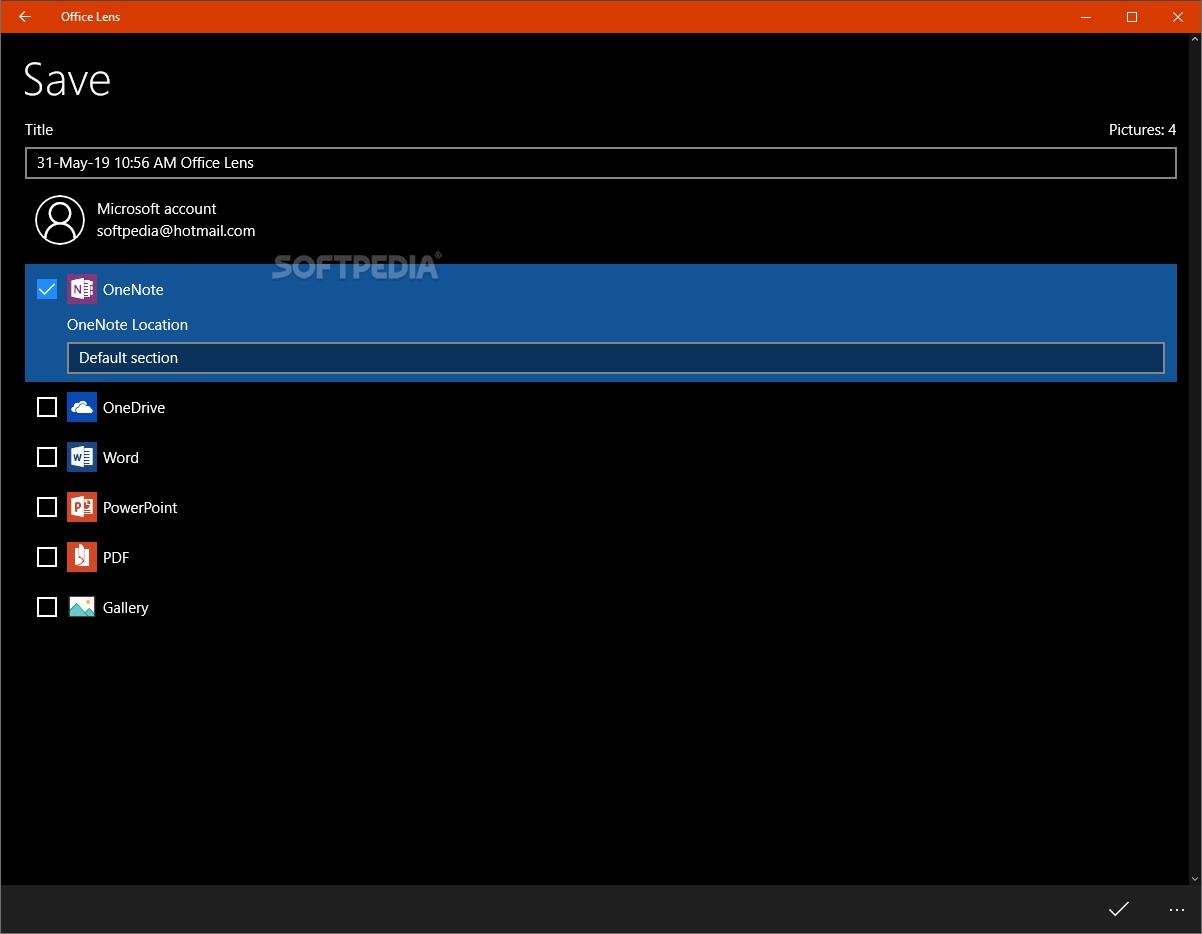

These are handy if you want to use a large aperture to minimise depth of field, or create motion blur with a slow shutter speed.

#WHY CANT I DOWNLOAD OFFICE LENS ISO#
This does give you some flexibility in poor lighting conditions, but be prepared for image quality to be noticeable poorer than if you were shooting in your camera's standard range.Īt the other end of the scale, low ISO settings that are one stop below the base sensitivity of the camera are sometimes available. This means cameras deliver optimum image quality in their standard ISO range, with maximum detail and the least amount of digital image noise at their base ISO settings - usually either ISO100 or ISO200.Īt the extended range, even more 'gain' is applied (think of it like turning the volume up on a Hi-Fi, so system noise becomes more apparent) than in the standard ISO range, which results in more digital grain. Many cameras split their total sensitivity range into standard and 'extended' ISO sections. 8: I took some sunset photos, but they don't look very colorful. Learn more: The A to Z of Photography: Kelvin.As we've mentioned above, unlike JPEG files, it's easy to change the color temperature of raw files at the editing stage. If you have time, you might want to experiment with your white balance settings, but our recommendation would be to shoot in raw. Things get trickier when you have a mix of lighting - when daylight is streaming in through a window and you've got interior room lights switched on as well, for example. The quickest remedy is to change your camera's white balance setting from Auto to Tungsten (also called Incandescent on some cameras) if you're shooting under standard interior lights, or the Fluorescent setting for strip lighting. The usual result is that interiors lit by general-purpose lights have a nasty yellow color cast. The Auto White Balance setting of DSLRs typically does a good job of reacting to varying daylight conditions, such as bright sunshine, cloudy skies or shade, but the color temperature of indoor lighting generally falls outside of the range covered. The likely cause of this is an inaccurate white balance. 7: Many of my indoor photos have a nasty yellow cast. It's also the best option for inkjet printing, even if you're sending your files to a printing lab. The sRGB colour space ('s' stands for standard) is best for viewing images on a screen or distributing them electronically. The Adobe RGB color space was developed to enable the largest gamut when printing an RGB image on a CMYK printer. Learn more: The A to Z of Photography: Raw.It's more time consuming, and you'll need to use a raw converter like Photoshop Lightroom, but the results are worth it. You camera's already applied an number of adjustments to a JPEG file, as well as compressing it at the same time.Ī raw file lets you make all those creative choices, allowing you to control exposure, white balance, color mode, saturation, contrast, sharpening, as well as a host of other settings. Put simply, it's best to think of JPEGs as high-street prints and raw files as negatives. 3: Should I Delete All or Format to remove pictures from a memory card? Learn more: 5 essential photography filters.

Replacing a filter is a lot cheaper than writing off a lens! If your camera resides permanently in an orderly studio, this might not be an issue, but if you do most of your photography in the great outdoors, it certainly will be. However, skylight filters play a second role, protecting the front element of the lens from accidental scratches and splashes. With the sophisticated white balance abilities of today's cameras, this is less critical than it was when photographers were using film (especially slide film).

One is to reduce the cool, slightly blue color cast that you might see in some of your shots, especially those taken in shade under a blue sky. 2: Should I use a skylight filter on my lens? Finally, keep the camera's lens opening pointing downwards when changing lenses, to minimise the risk of anything falling into it. Next, get the replacement lens ready to fit so that you don't have to waste time with the camera internals exposed. If that's not possible, at least shield yourself from the wind. Where possible, choose a dust-free, non-windy location when changing lenses too. Always switch the camera off, as this removes any static charge from the sensor that can attract dust particles. Don't be afraid to change lenses when you need to, but take a few precautions.


 0 kommentar(er)
0 kommentar(er)
